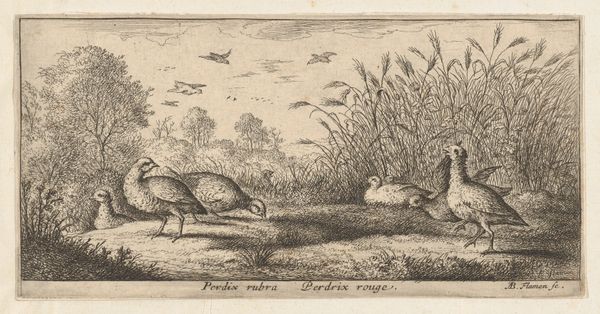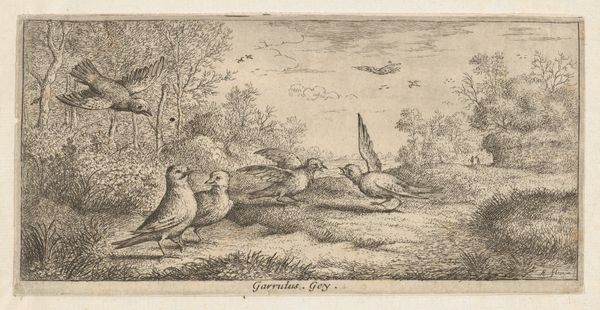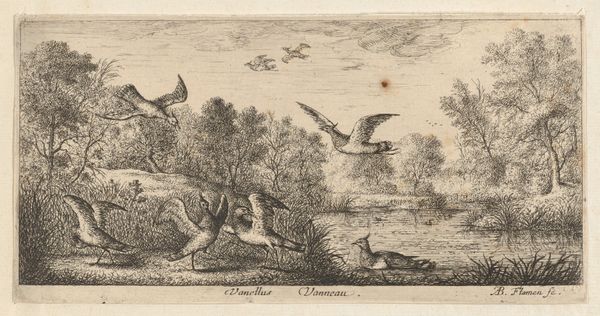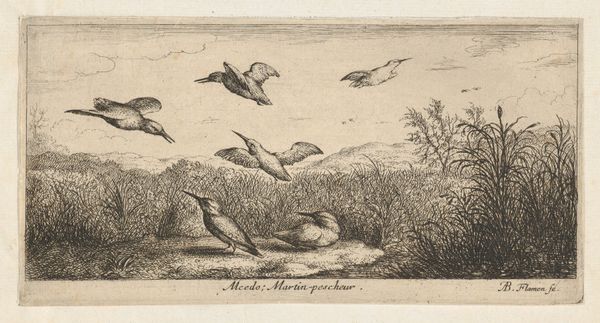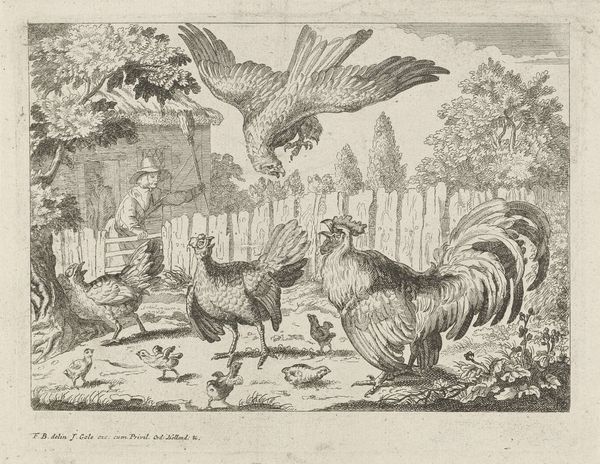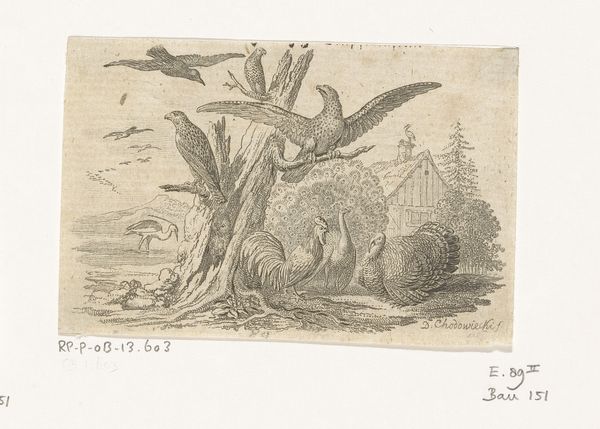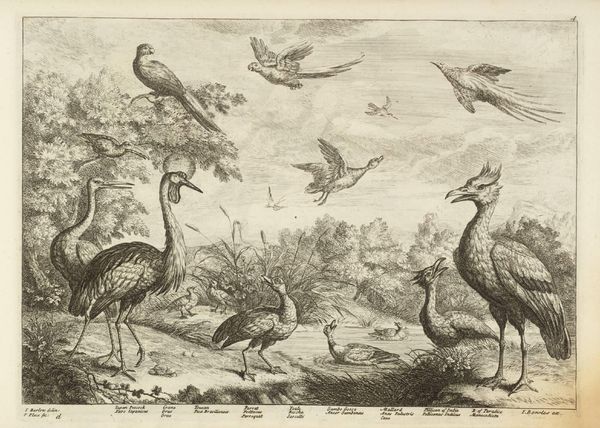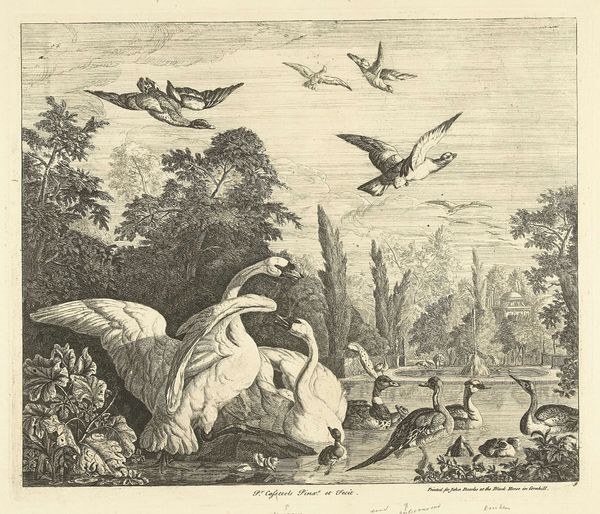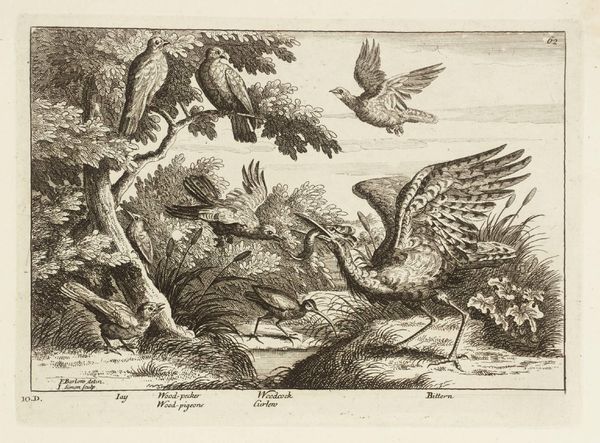
Rusticula, Beccasse (The Woodcock), from "Livre d'Oyseaux" (Book of Birds) 1650 - 1665
0:00
0:00
drawing, print, etching
#
drawing
# print
#
etching
#
landscape
#
bird
Dimensions: Sheet: 4 x 7 15/16 in. (10.2 x 20.2 cm)
Copyright: Public Domain
Curator: This is "Rusticula, Beccasse (The Woodcock)," an etching by Albert Flamen, part of his "Livre d'Oyseaux," created sometime between 1650 and 1665. It currently resides at the Metropolitan Museum of Art. Editor: My first thought is quiet observation. There’s a stillness in the landscape despite the birds taking flight; almost a tension between movement and stillness. Curator: The composition does present a compelling tension. The foreground features resting woodcocks, grounded, while others ascend, creating a diagonal that guides the eye upward and introduces depth through line and form. Editor: And what does the woodcock symbolize within its 17th-century context? The bird’s capture has historically held different connotations across European cultures. We see these tensions between nature and civilization frequently explored during periods of increased land enclosure, what impact did that have here? Curator: The lines, achieved through meticulous etching, define the textures of the birds' plumage and the subtle variations in the foliage, highlighting Flamen's command over the medium. Look how the varying densities of lines create volume and shadow, an early investigation into rendering naturalism through printmaking techniques. Editor: Do we see anxieties about landscape and the burgeoning early modern relationship to “nature” here? These weren't passive representations. They were engaged in actively shaping European identity through notions of control and possession of landscape. What would it have meant for the viewership in that era, the rural working classes? Curator: I find the visual order so appealing. Note the way the artist creates an intricate harmony of light and shadow that leads us through the idyllic backdrop to the figures—a rural abode. We see such mastery within the tonal range. Editor: Right, the choice of subject speaks to themes of human intervention. Woodcocks are targets for hunting, after all, so Flamen wasn’t merely representing; he was perhaps acknowledging an unfolding disruption and an altering relationship with the natural world. Curator: Considering this detailed focus on light and shade, balanced compositions—viewers are invited to focus on the artistry itself and, beyond mere symbolic readings. Editor: That said, in scrutinizing the detail, it’s tough to overlook this intersection, nature depicted and the implied role of the hunter. A complicated interplay between representation, human ambition, and its ramifications. Curator: I concur, perhaps, then, its enduring resonance lies in the convergence, its formal execution and implied commentary on a changing world. Editor: Definitely something to consider further! Thanks for unpacking its nuances with me.
Comments
No comments
Be the first to comment and join the conversation on the ultimate creative platform.
